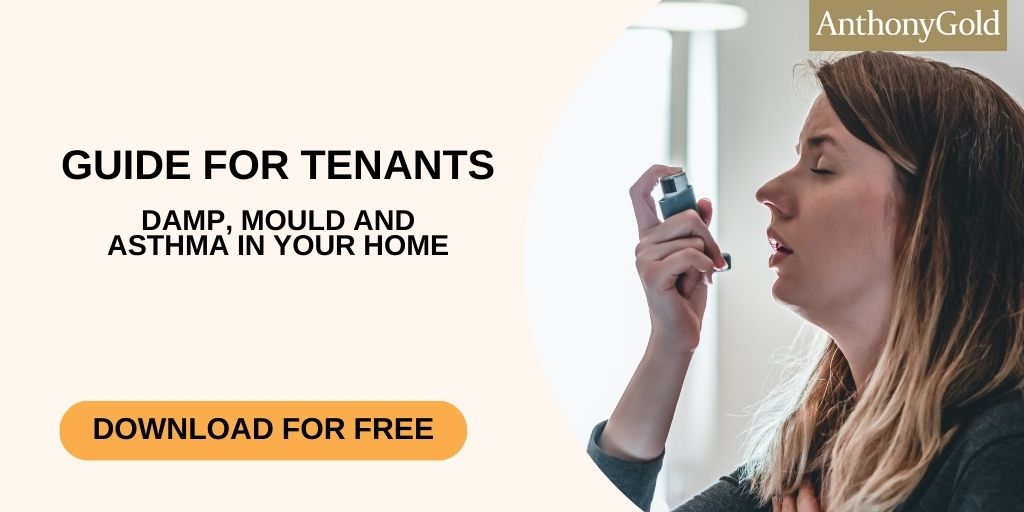Leaving Me Breathless- Damp, Mould and Asthma
Social housing can be affected by damp and mould which gives rise to many housing disrepair claims. Whilst the primary Claimant is the tenant who seeks the principal remedy of repairs there can be other potential Claimants whose health has been affected by exposure to damp. Tenants may have children who have been affected. The children can bring claims in their own right with any damages awarded invested until they are 18.
Mould releases tiny spores into the air which can trigger asthma symptoms in some people. Epidemiological evidence shows that indoor dampness is associated with respiratory symptoms, aggravation of pre-existing asthma and development of new onset asthma. It is well established that living in damp accommodation is likely to contribute to respiratory illness and exacerbation of constitutional asthma. Damp and cold will tend to produce bronchitis type symptoms and the presence of mould will produce asthmatic type reactions. Where a person has a pre-existing medical condition, a personal injury claim may be relevant where an exacerbation of the condition caused by the dampness can be shown. Asthma, bronchitis or pneumonia may give rise to claims. I will use asthma as an example.
Where it can be shown that a person’s normally well controlled asthma has been exacerbated during a period when the property was suffering from dampness there is a potential claim. Exacerbation manifests in increased symptoms of breathlessness and wheezing, chest infections and increased use of medication often leading to hospital admissions and significant amounts of time off school.
Where an exacerbation coincides in time with a period when a property was damp claim there are relatively good prospect of success. A medical expert is likely to say that on the balance of probabilities constitutional disposition to asthma will be affected by adverse housing conditions with symptoms generally getting worse rather than better as long as there is dampness present.
Hopefully at some stage the exposure to damp will come to an end, either after repairs are carried out or the Claimant is re-housed in warm dry conditions. There will then be a period of recovery and thereafter quantum can be determined. There are good prospects of recovery if housing is improved with the condition becoming well controlled again.
The Guidelines for the Assessment of General Damages in Personal Injury Cases provide a range of damages in relation to asthma on a sliding scale as follows:-
• mild asthma, bronchitis, cold and chest problems ( usually resulting from unfit housing or similar exposure, particularly in cases of young children) treated by a general practitioner and resolving within a few months- £3400.
• relatively mild asthma-like symptoms often resulting, for instance, from exposure to harmful irritating vapour £7000 to £12600
• bronchitis and wheezing, affecting work or social like, with the likelihood of substantial recovery within a few years of the exposure to the cause £12600 to £17250
• Chronic asthma causing breathing difficulties, the need to use an inhaler from time to time and restriction of employment prospects with uncertain prognosis £17250 to £28250
• Severe and permanent disabling asthma, causing prolonged and regular coughing, disturbance of sleep, severe impairment of physical activity and enjoyment of life and where employment prospects, if any, are grossly restricted. £28250 to £43000.
Fortunately most of our clients who have been exposed to dampness do recover after repairs are carried out and there is no long term damage and so most claims, particularly child claims, fall within the lower categories.
There can be contributory factors, for example there may be smokers in the house. There is usually a percentage reduction in the award of damages for contributing factors. It does not necessarily mean that the claim fails entirely.
Related personal injury claims have a different level of urgency from the primary injunction claim because of the need for urgent repairs. Ideally all related claims should be brought together but it may not be possible. The injunction claim should not be delayed by related injury claims that are progressing at different speeds. Where personal injury claims cannot be settled in the early stages court proceedings may have to be brought separately or secondary Claimants can be added as parties at a later stage.
Many personal injury claims settle pre-issue and are only issued at all to protect limitation. Limitation is not an issue for child Claimants but date of knowledge is crucial in adult cases.
Public funding is available for these claims. Although they are personal injury claims they are not excluded under Schedule 2 of the Access to Justice Act 1999 because the injury arises from housing disrepair and they therefore fall within the housing section of the funding code. Children are generally always financially eligible for public funding. Conditional fee agreements may be offered in adult cases to those ineligible for public funding.

